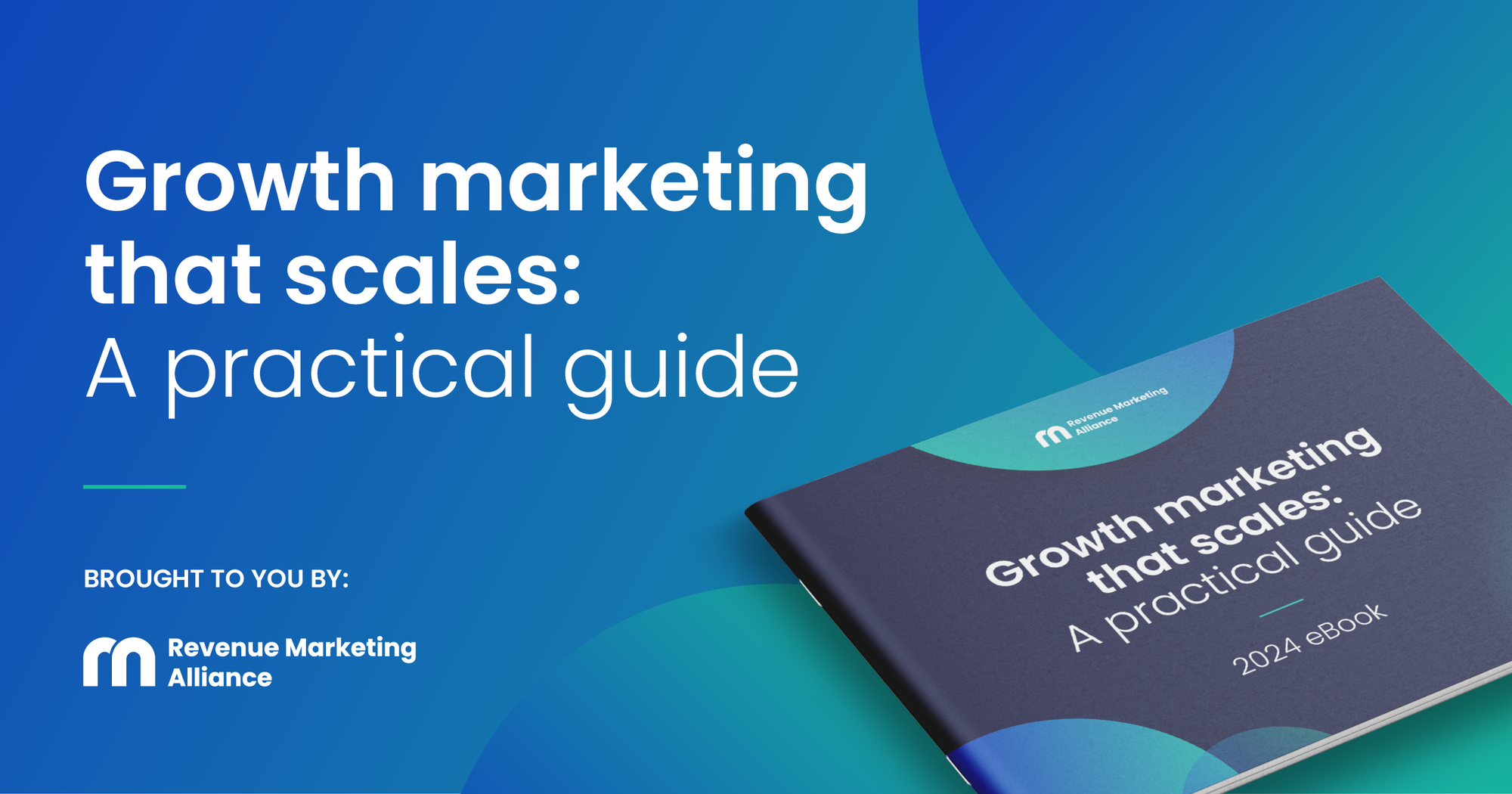The ability to engage and retain customers has never been more important than it is now.
An effective content strategy isn’t just about consistently producing articles, videos, or podcasts; it’s about crafting compelling experiences that resonate with your target audience and drive growth.
In this article, we’ll explore how a well-thought-out content strategy can drive your growth marketing, transforming how you connect with both new and existing customers.
We’ll get into:
- Personalization, personas, and segmentation
- Creating targeted content across channels
- Engagement and interaction
- Customer retention through content
- Gamification and incentives
Let's dive into how strategic content, coupled with customer analysis, can create a dynamic, interactive journey for every user.
Personalization, personas, and segmentation
Personalization
Personalized content is fundamental for effective growth marketing. When you tailor messaging to specific audiences, you demonstrate an understanding of their unique needs, pain points, and desires.
This allows you to move away from an ineffective one-size-fits-all content approach. It also makes you come across as more human – you’re more likely to respond to an email that addresses you with your first name rather than something generic like “Hi there!”
There’s so much data at your fingertips, so utilizing it in a way that makes better experiences for your target audience will benefit both you and your customers: They get a warm, seamless experience, while you get to feel the benefit of enhanced brand loyalty, which leads to improved ROI and more sustainable growth. Win-win!
Personas
Personas are semi-fictional representations of your ideal customers. When developing personas, it's important to look at all the information you have; well-made personas require both quantitative and qualitative research techniques.
Start by analyzing your existing customer data like purchase histories, website behavior metrics, survey responses, and social media interactions. Look for patterns in demographics, but also psychographic factors like motivations, pain points, values, and goals.
From there, conduct additional qualitative research through methods like:
- Interviews (one-on-one or focus groups) with current customers to understand their decision-making process, objections, influences, and day-to-day experiences.
- Observational research of how customers use and interact with your product/service in the real world.
- Social media listening to see how your target audience discusses and perceives subjects related to your industry.
As you gather these insights, look for commonalities to form several distinct profiles, each with their own goals, challenges, buying habits, and personal traits. Give each persona a descriptive name like "Busy Professional Parent" or "Health-Conscious Millennial."
Flesh out the personas into full narrative profiles – their background story, career, household details, quotations reflecting their attitudes, and, most importantly, their goals and pain points related to your product/service.
Creating representational photos can also bring your personas to life.

The more detailed and specific the personas, the better you can tailor content that truly resonates. Update and refine personas continuously as you gather new data. Having three to five solid personas that encapsulate your ideal customers is perfect for agile content creation and growth marketing initiatives.
Once you have your personas down, you can use them as a reference for your segmentation efforts.
Segmentation
Segmentation takes personalization further by dividing your audience into distinct groups.
Segment your customers and prospects based on key shared characteristics like demographic, psychographic, behavioral, and geographic information – all that good stuff you’ve put into your buyer personas.
Accurate segmentation enables you to hyper-target messages, products, and campaigns. Think of it this way: A middle-aged dentist in Boise likely has different needs and interests than a busy NYC mom.
If you’re trying to attract multiple audiences, segmentation, and targeted content is essential. Just so we’re all on the same page, here’s a refresher on the four main types of customer segmentation: Demographic, geographic, psychographic, and behavioral.
Demographic
Demographic segmentation divides customers into groups based on observable, objective criteria like age, income bracket, education, ethnicity, profession, family status, and more.
Analyzing demographic data enables you to look at quantifiable information across different customer groups, and is a simple but effective way to associate your customers.
Geographic
Geographic segmentation is the easiest to identify. It categorizes customers by location-based factors including country, region, city, postal code, population density, and climate.
This type of segmentation allows for localization and personalization based on your customers’ regional needs.

Psychographic
Psychographic segmentation could be viewed as the complete opposite of demographics. It aims to group customers according to psychological attributes like attitudes, personality, values, interests, motivations, and lifestyles.
You can reveal these drivers through direct customer research like surveys and interviews. Psychographic insights truly come into play when you want to create inspiring messaging that builds an emotional connection.
Behavioral
Perhaps one of the most useful segmentation types for marketers, behavioral segmentation divides customers based on their activity, for example – how they interact with a brand before, during, and after transactions.
Behavioral segmentation includes analyzing patterns related to spending habits, loyalty, product usage, engagement, decision journey, and more, and can be used to predict future actions.
Creating targeted content across channels
Users engage with different channels for varying purposes, so tailoring content to each platform strategically is important.
Social media may be ideal for captivating videos and relatable memes, while blog posts and long-form guides position you as an industry thought leader.

For example, if you’re selling project management software, Instagram could showcase bite-sized productivity tips. YouTube allows in-depth product tutorials. Email newsletters can curate your latest blog posts and customer success stories.
Each channel plays a distinct role in providing a seamless and valuable customer journey.
The key is understanding audience behavior on each platform first, and then creating tailored content experiences. Generic, duplicated content across channels is no good, all it does is contribute to online noise. But delivering relevant, valuable content at every touchpoint? You’ve got a powerful content strategy on your hands there!

Engagement and interaction
Static, one-way content is an insufficient, outdated relic of a time gone by. You need to spark conversations, foster connections, and encourage audience interaction with your brand.
Interactive content like polls, quizzes, and calculators promote participation, gather valuable customer data, and boost engagement. Who doesn’t love taking a poll or a quiz, whether it’s one of the silly, classic Buzzfeed quizzes like “Find out which type of bread you are” or a poll that asks how you allocate your marketing budget – creating ways for your audience to interact will help grow engagement.
You also don’t want to forget word-of-mouth (WoM) marketing – it’s a super influential tactic. User-generated content such as reviews and social shares tap into WoM marketing by allowing fans to become brand advocates.
Nurturing thriving online communities is also crucial. Private groups, dedicated channels, and forums enable customers to connect, seek advice, and really feel heard. People inherently crave a sense of belonging, and online communities work to supercharge engagement and cultivate passionate brand loyalty.

Customer retention through content
While customer acquisition is important, retaining existing customers offers significant profit potential, and high-quality, valuable content plays a vital role in customer retention.
In-depth guides, videos, courses, and educational resources continuously deliver value while reinforcing your brand as the industry expert. Customer support content like FAQs and troubleshooting documentation make customers' lives easier while reducing support costs.
Having a wealth of content out there is great and all, but personalized content recommendations are the key to making your audience feel truly special. Of course, it’s normal to lose the occasional customer, and when (or if) you do, you’ll need to create a “win-back” campaign to reignite lapsing customers' passion.
The goal is to re-engage your lost customers. You can do this by offering them incentives like rewards or exclusive content to encourage them to come back to you and, hopefully, stick around.
Top-quality content also gives you space to create a meaningful brand story. Having that strong narrative helps you to authentically align with customers, which can foster immense loyalty among your customer base.
Ultimately, great content nurtures lasting customer relationships which drives business growth.
Gamification and incentives
Gamification is an increasingly effective tool for audience growth, tapping into innate human desires for achievement, competition, status, and rewards.
For example, an app that gamifies fitness by awarding points and badges leverages psychological motivators like achievement cues to promote engagement. Contests and giveaways where customers earn entries through fun brand challenges set the stage for user-generated content while incentivizing participation.
Punch cards and loyalty programs indulge humanity's love of accumulating rewards. Most coffee shops offer loyalty cards – get a stamp every time you get a coffee. Starbucks does this with their app, which lets customers cash in "stars" for free drinks, motivating continued purchasing and engagement.
People are driven to collect points and unlock exclusive rewards, similar to the compulsive appeal of digital games. Gamification is a great way to boost engagement, conversion rates, referrals, and sharing while enhancing customer retention and loyalty.
Final thoughts
A well-executed content strategy is essential for driving growth and fostering customer loyalty.
When you embrace personalization, develop detailed personas, and effectively segment your audience, you can create content that resonates on a personal level, enhancing user engagement and satisfaction.
Remember, the goal isn’t just to attract new customers but to create lasting relationships through valuable, relevant, and interactive content. Implementing these strategies not only boosts your growth marketing efforts but also builds a loyal customer base that is key to sustainable business success.
Want to learn more about growth marketing?
We’ve got just the thing for you.
Growth marketing that scales: A practical guide is your no-nonsense handbook for scalable, repeatable growth that propels your business to new heights.
You'll gain a competitive edge by:
🎓 Mastering the core principles behind growth marketing
🎯 Developing a strong growth strategy
📊 Optimizing your marketing funnel
🔮 Creating tailored customer content
And more, including real-world case studies from marketing pros!
Get your copy today. 👇




 Follow us on LinkedIn
Follow us on LinkedIn



